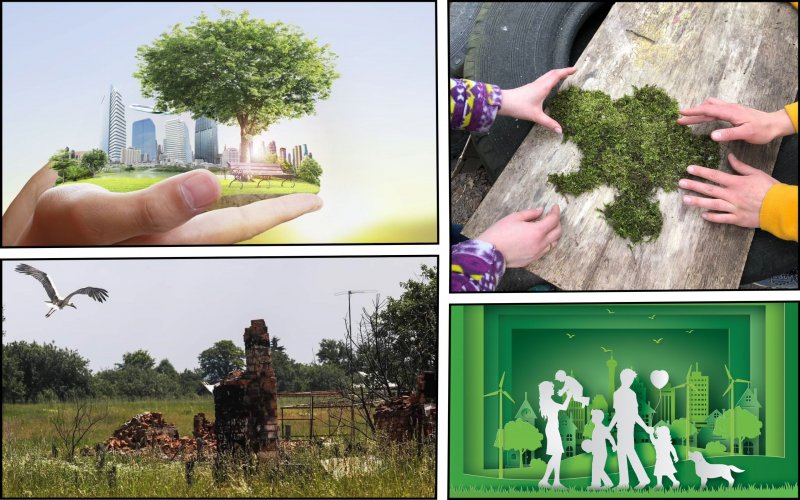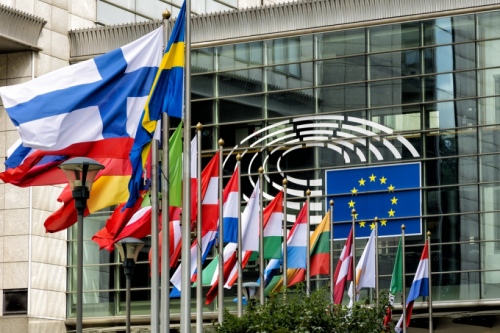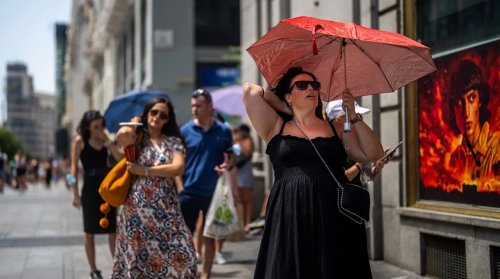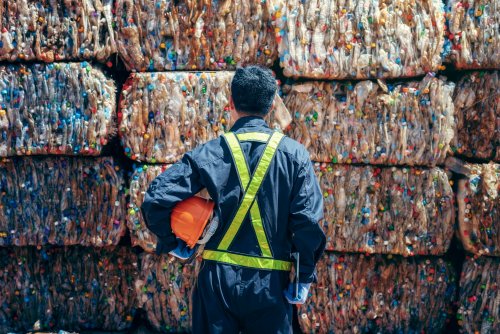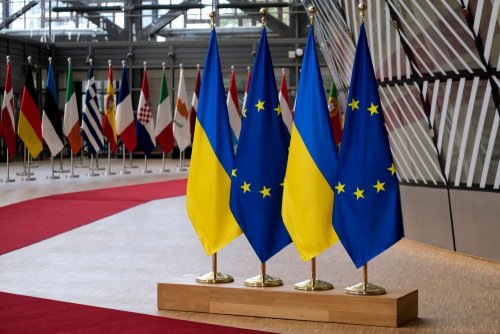"There is no point in restoring the way things were – we need to do better": this is a key thesis that most Ukrainian officials say when it comes to Ukraine's post-war recovery. Our government has already declared its support for the European Green Deal and the Green Deal, and its commitment to achieving net zero greenhouse gas emissions. Government officials always emphasize that Ukraine's recovery will be green. The idea of a "green recovery" has several advantages. First of all, Europe has been investing huge amounts of money in the green transition for years, so if we want to attract investment in their market, it will be much easier to get funding for environmental projects than for conventional reconstruction. Second, the green transition will make our economy more efficient and less dependent on non-renewable resources. Finally, a green country will become more attractive to live in. Over the past year and a half, a lot has been said about what Ukraine's green recovery should look like. The general framework of this process was discussed at the Lugano and London recovery conferences, as well as at bilateral meetings. In the light of European integration processes, EcoPolitic decided to find out how our European partners see the process of Ukraine's green recovery.
How does the European Commission see green recovery?
The European Commission recorded its initial vision of the post-war reconstruction of Ukraine more than a year ago. Then appeared communique COM(2022) 233 "Ukraine Relief and Reconstruction" dated May 18, 2022.
Based on this communiqué, Ukraine's recovery should consist of four elements, including: "Supporting the recovery of Ukraine's economy and society by promoting sustainable and inclusive economic competitiveness, sustainable trade, and private sector development, while fostering the country's green and digital transformation."
This paragraph means that our economy should be low-carbon and energy-efficient, nature-based, have efficient and clean production, balanced consumption, and be based on the principles of shared responsibility, innovation, cooperation, solidarity, flexibility, and interdependence.
However, in this document, the European Commission does not propose sectoral targets or strategic projects, but only emphasizes that it wants to see the recovery process closely linked to the broader reform agenda.
A year later, on June 20, 2023, the European Commission published a draft Regulation on the establishment of a separate special instrument to support the financing of Ukraine's reconstruction needs with indicative funding of up to €50 billion for the period 2024-2027 – the Ukrainian Facility. The Commission has specified its vision of reconstruction.
What does the Ukrainian Facility offer?
As stated in the draft Regulation:
"Reconstruction from the destruction caused by Russian aggression cannot be limited to the restoration of what was destroyed. The reconstruction provides an opportunity to support Ukraine in its process of integration into the Single Market and in accelerating the sustainable green and digital transition in accordance with the EU policy. The Fund should contribute to the reconstruction in such a way as to modernize and to improve the economy and society of Ukraine, based on EU rules and standards, investing in Ukraine's transition to a green, digital and inclusive economy, as well as in the restoration, reconstruction and modernization of its critical infrastructure, production capacity and human capital".
The text of the document states that the Ukrainian Facility should contribute to compliance with the Paris Agreement and the UN Framework Convention on Climate Change, the United Nations Convention on Biological Diversity and the UN Convention to Combat Desertification. At the same time, the financed measures should not deteriorate the environment or harm the climate. In particular, the financing allocated in the context of the Ukrainian Facility should correspond to the long-term goal of containing the increase in the global average temperature, promoting adaptation to the adverse effects of climate change, maintaining diversity, a closed-loop economy and zero pollution. And they want to pay special attention to projects that meet several climate goals at once.
The financed measures in general, in particular in the area of environmental protection, should bring Ukraine closer to EU membership. Therefore, among the working principles of the mechanism, the authors singled out support for progress towards the Sustainable Development Goals and integration of the European Green Deal. At the same time, these measures should not conflict with our internal program documents, such as the Nationally Determined Contribution to the Paris Agreement.
According to the regulations, a more detailed framework of measures to be financed will be contained in the "Plan of Ukraine". The Cabinet of Ministers submitted the preliminary plan to the European Commission in early November, with input from key business communities.
The final approval of the Ukrainian Facility is expected in December this year. Then it will become known whether the government's ideas are worth €50 billion. Information about what concrete steps the "Ukraine Plan" will contain has not yet been made public.
At the same time, individual funds and governments, without waiting for general programs, have already begun to implement their own promising projects that will contribute to the green transition and recovery. It is likely that further initiated projects will operate within the same framework. Therefore, after analyzing them, it is possible to predict in which direction the green recovery of Ukraine will move in the coming years.
Green recovery of the energy sector is a key interest of investors
European partners also see energy as one of the priority areas of green recovery. Already now they are ready to invest both in projects of comprehensive restoration of the energy infrastructure and in point supply of alternative energy.
To modernize the energy system and strengthen its sustainability during the London Recovery Conference, Ukraine signed an Energy Partnership Memorandum with the Ministry of Foreign Affairs, Commonwealth of Nations and Development of Great Britain. The memorandum envisages the creation of a new Challenge Fund in the field of green innovations "InnovateUkraine" in the amount of 62 million pounds. The funds will go to energy innovation projects that will accelerate the reconstruction and restoration of the Ukrainian energy infrastructure.
In 2023, the European Bank for Reconstruction and Development (EBRD) has already provided support for Ukraine's energy recovery. At the conference in London, EBRD representatives signed a memorandum with representatives of PrJSC "Ukrhydroenergo", NEC "Ukrenergo" and JSC "Naftogaz". Investments relate to decarbonization, reduction of methane emissions, improvement of energy efficiency, as well as restoration and modernization of hydroelectric power plants.
The European Investment Bank, in turn, is currently collecting applications for the project competition within the framework of the financial agreement "Energy efficiency of public buildings in Ukraine". The purpose of this agreement is to implement energy-efficient measures in public buildings, including hospitals, schools, universities, kindergartens, pharmacies, libraries, etc. Financing will be provided for thermal modernization of public buildings and construction works.
The DiXi Group team, with the support of the Dutch government, has also joined the green recovery of communities. They plan to select 10 communities and help them develop Local Energy Plans.
In turn, European researchers also consider energy to be one of the most promising areas of green recovery and are formulating recommendations on how to attract more investment in it. In particular, researchers from the Slovak organization GLOBSEC note in their report that Ukraine needs to pay attention to nuclear and hydro generation and direct investments in these sectors. At the same time, they also emphasize the excessive involvement of the state in these sectors and the existence of special obligations on producers. In their opinion, corporatization, the establishment of supervisory boards and public control over these sectors could increase investor interest.
In her article for Politico, Lawrence Tubiana, Executive Director of the European Climate Foundation, writes that Europeans should support Ukrainian municipalities that are ready to implement sustainable energy solutions. In her opinion, Ukraine's green recovery in this area will be accelerated by insurance to protect investors and soft loans.
Climate projects
The partners approached the climate projects quite comprehensively. In particular, the European Investment Bank has already added climate conditions to the reconstruction loans it finances.
The Stockholm Environment Institute (SEI) is launching a project with the funds of the Swedish government to develop a road map for Ukraine to achieve climate neutrality by 2050.
Switzerland also agreed to invest in climate projects. The relevant agreement between the governments of Ukraine and Switzerland was signed during the International Conference on the Reconstruction of Ukraine in Lugano. Investments will concern state and private projects to reduce greenhouse gas emissions in various spheres of Ukraine's activity – infrastructure, construction, transport, energy.
Modernization of industry
Ukrainian enterprises will be able to receive about €2 million for eco-modernization from the German government as part of the "Best Available Technologies and Management Methods (BTM) for Ukraine" program. The project is aimed at reducing industrial emissions.
The UNIDO project, for which Germany has allocated €3 million, works in the same field. This project involves research and diagnostics in the field of industry, preparation of recommendations for improvement and planning, in particular in the areas of energy efficiency, circular economy, "green" energy, improvement of quality standards, etc. . The project will help identify the necessary technologies that will be used during reconstruction and will become the basis for the future global UNIDO Program for green recovery and post-war construction for inclusive and sustainable industrial development in Ukraine.
Modernization of agricultural production
Some projects are also implemented in the agricultural sector. For example, The Netherlands Agency for Entrepreneurship together with a group of Dutch companies launched a joint project in the dairy industry of Ukraine. It will provide support to dairy enterprises, in particular in terms of energy saving, biogas production and solar energy on dairy farms.
Project specialists also plan to help Ukrainian farmers to rationalize the use of feed and organic fertilizers. All this should eventually lead to a decrease in the cost of production and access to promising European sales markets.
Green reconstruction of communities
One of the largest funds specializing in "green" reconstruction of affected communities is the Scandinavian fund Nefco. It has been implementing the Green Recovery project since 2022, which provides financing and technical support to Ukrainian municipalities and plans to support the green transition in Ukraine in the long term.
Nefco is already implementing a number of projects related to: increasing the energy efficiency of water supply facilities, energy efficiency of public buildings and street lighting in small communities, helping with the repair and construction of critical infrastructure facilities. A joint program has already been implemented with KP "Khmelnitskvodokanal".
As you can see, the restoration projects that are being implemented now cover very different industries and have different scales. However, they all have a common goal: in addition to rebuilding Ukraine, bring its production and infrastructure up to EU standards.
On November 28, a four-day conference of the European Commission on the green recovery of Ukraine will begin in Vilnius. It is hoped that even more projects will be launched during the event. However, a comprehensive green restoration of the entire country is impossible only through the efforts of individual initiatives. The main link of our recovery today is the not yet presented "Ukraine Plan". The future of our country depends on what will be in it, on which projects we will bet and how successfully we will be able to implement them.

